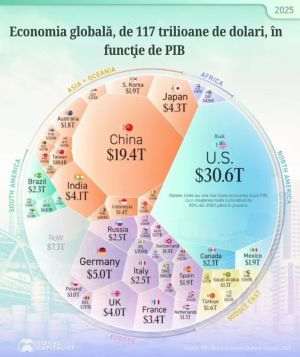Reporter: How would you describe the activity of the FNGCIMM in its first ten years of operation?
Aurel Şaramet: At the end of 2011, the FNGCIMM, which is an active player on the banking and financial market of Romania, celebrated a decade of achievements, where the upward growth trend was supported by the flexible adaptation of its ability to guarantee diversified requirements, of optimizing the internal structure and expanding its territorial network, of cooperation with the government institutions and with its main financial institution associates. Every year brought with it a new challenge, constantly raising the bar higher. The activity of the Fund was constantly focused on creating the conditions to allow more SMEs and beneficiaries of the priority government programs to access funding, he said.
Supporting over 20,000 SMEs, guaranteeing loans for the benefit of banking and non-bank institutions of more than 4 billion Euros, the involvement in the support of over 1,000 SMEs which are the beneficiaries of European grants represent just a few of the quantitative benchmarks of the evolution of the FNGCIMM over the last ten years.
In this context, the year 2011 was a peak of the guarantee activities conducted by the FNGCIMM. The institution granted a number of 10,000 guarantees, amounting to approximately 2.2 billion lei. These figures once more proved, if it even was necessary, that in a year of crisis, the activity of the FNGCIMM had beneficial effects on the business environment, as the guarantees it granted backed loans of about 4.4 billion lei in 2011 and over 115,000 jobs.
Aside from the guarantee activity, the Fund successfully got involved in the performance of a series of government programs, for accessing the European funds and more. I would mention, out of all those, the granting of guarantees for obtaining the advance from the Payments Agency For Rural Development and Fishing (APDRP) to the beneficiaries eligible for the measures accredited through the National Rural Development Program, guarantees granted for the eligible beneficiaries of the European Fishing Fund (FEP), as well as those pertaining to the Kogălniceanu program.
The increase in the volume of guarantees granted involves the taking on of higher risks, but this aspect was adequately managed. The ratio of credit risk, measured as the ratio between the value of the annual payments and the value of the guarantees portfolio booked in the beginning of the year was about 6.5% in 2011, down approximately 2% compared to 2010. This favorable evolution came as the ratio of non-performing loans among SMEs during the entire year 2011, across the entire banking system, was over 10%.
Reporter: How has the lending activity of SMEs changed over the last decade in Romania?
Aurel Şaramet: Until 2004, the access of SMEs to loans was extremely difficult, mostly caused by the reluctance or the refusal by the Romanian commercial banks to lend to that sector, which was justifiable at the time, due to the higher trading costs compared to the amount of the loans granted. In the years 2002 and 2003, the volume of the loans granted to the SME sector represented about 40% of the total loans granted by the banks.
As the Romanian banking system developed, the availability of loans for SMEs gradually recovered in the years prior to Romania's accession to the European Union and the loan supply peaked in 2006-2007, when a large number of banks defined specific strategies for dealing with SMEs.
The impact of the international financial crisis on the availability of funding manifested itself as early as the beginning of 2008. The expectations concerning the worsening of the state of the economy led to a drop in loan demand, in particular loans for investments. According to the National Bank of Romania (NBR), the main causes of the drop in demand and supply in 2009-2010 continued to be the extended economic contraction and the pessimism on the short-term outlook, as well as the higher caution of lenders (manifested through the tightening lending standards and conditions).
Looking at it from the banks' angle, lending has functioned constantly, but it has only targeted those who posed a low risk of repayment, such as the multinational corporations, major companies, including the profitable state-owned ones, and the public authorities, whereas the SME segment, even though it remains exploited and much discussed in the media, faced the biggest obstacles in the getting access to funding.
After all this time, the FNGCIMM succeeded in supporting an increasing number of SMEs, focusing on granting those guarantee solutions which answer to the expectations and general needs of this sector to remain competitive and to increase its performance, regardless of the fluctuations which the financing activity has seen over the course of this decade.
Reporter: What is the state of SME financing in Romania compared to the overall situation in Europe? To what extent are the funding needs of SMEs in Romania met?
Aurel Şaramet: If we review the statistics concerning Romanian SMEs compared to the European ones, we can see similarities concerning the number of employees and turnover. At the same time, there is also a substantial gap concerning the contribution of small businesses to the added value, of just 40% in Romania, compared to almost 60% in the European Union. In fact, this provides the explanation for another striking difference, that of the weight of SMEs financed by banks in the total loan portfolio, of about 15-16% in Romania, compared to approximately 70% in the European Community. The very low ratio of lending by banks to small companies prevents them from increasing their competitiveness, and at the same time makes them more vulnerable in situations of crisis, when they need resources to recover. Because of this, states all over the world have passed measures to stimulate the SME sector during the recession, including by supplementing the funds needed to guarantee bank loans.
Reporter: What is your opinion concerning the crisis and the activity of partners (banks and SMES) during the crisis. What lessons did we learn (or should have learned)?
Aurel Şaramet: It is hard to tell what conclusions can be drawn from this crisis. First of all, we do not know what stage of the crisis we are in, because every time, the national or international context has shown us new facets of the crisis. One thing is certain, from our point of view, that every day we are learning and drawing conclusions.
The characteristics of the banking and business sector, over these last few years, have been excessive cautiousness and the absence of ambitious goals in the long run. SMEs were faced with the fear of looking further, focusing their efforts on identifying the means of survival and barely making ends meet.
Reporter: What can be done to increase the number of successful loan applications? What is the growth outlook for this sector?
Aurel Şaramet: The economic and financial context over the recent period has involved a sustained cautiousness from banks in granting new loans, both on a general and an individual level, in all the economic sectors. This is proven by the low growth rate of the non-government lending between 2009 and 2011. In order to facilitate accessing a new banking loan and, implicitly the guarantee of the FNGCIMM, in the case of collateral guarantees, an entrepreneur, regardless of the sector they activate in, first of all need audacity and faith, as well as well written and solid loan paperwork. Any increase seen in the accessing of loans by the SMEs will result in an increase of the ability of these companies to create added value, which will in turn ensure that the conditions for sustainable economic growth exist.
Reporter: Thank you!
























































